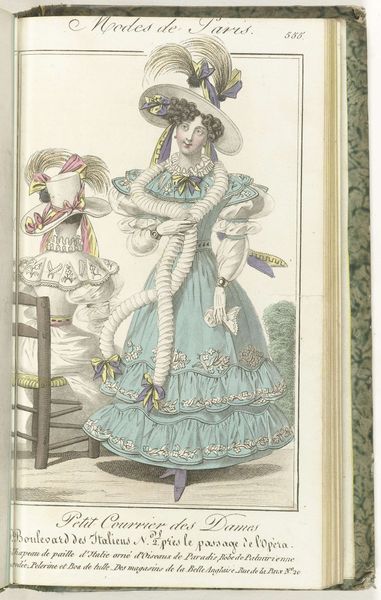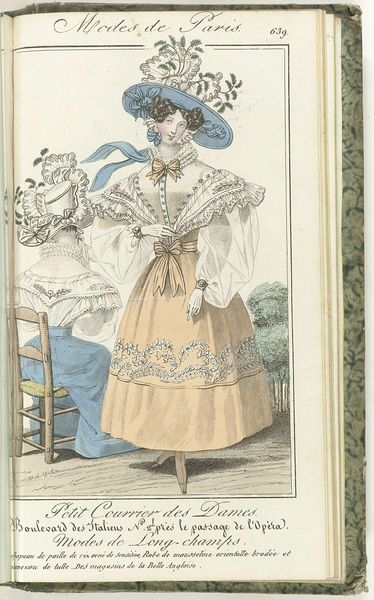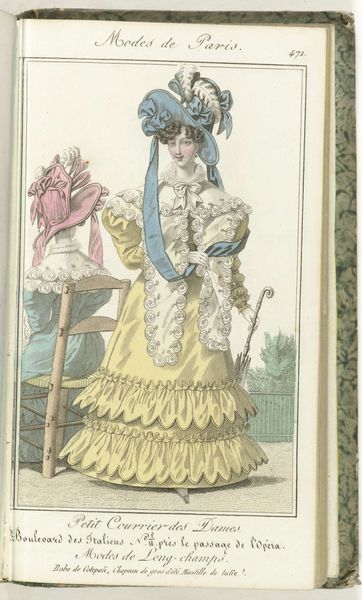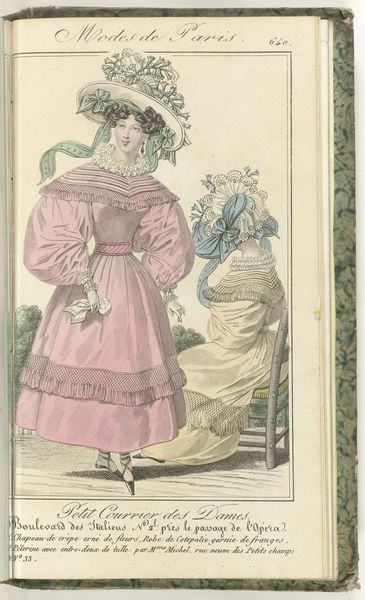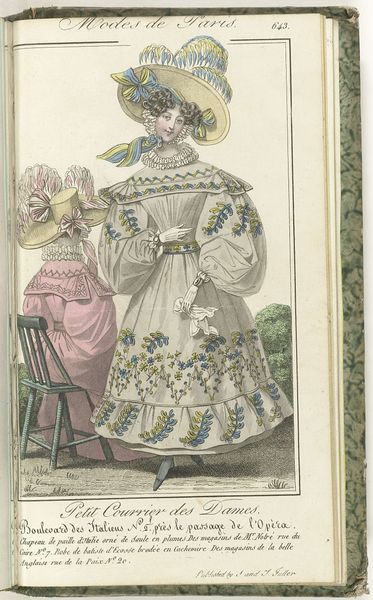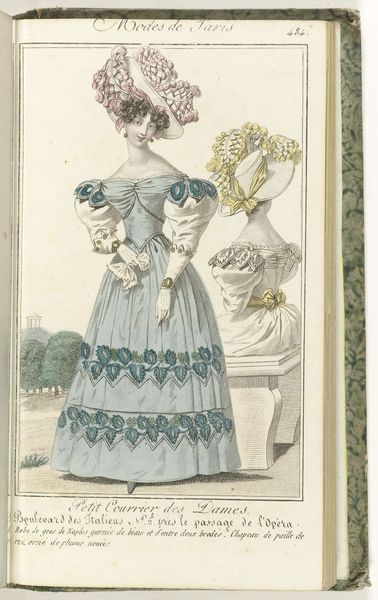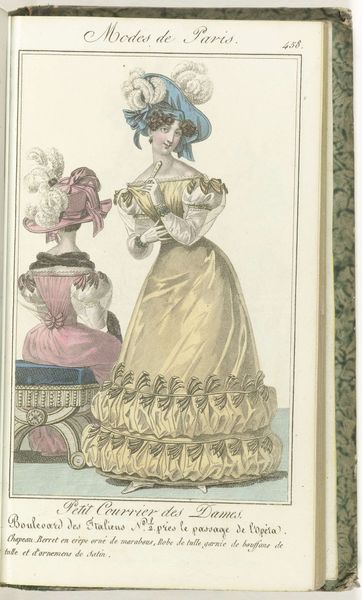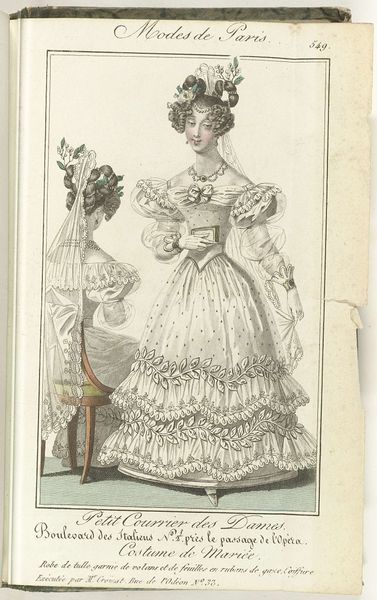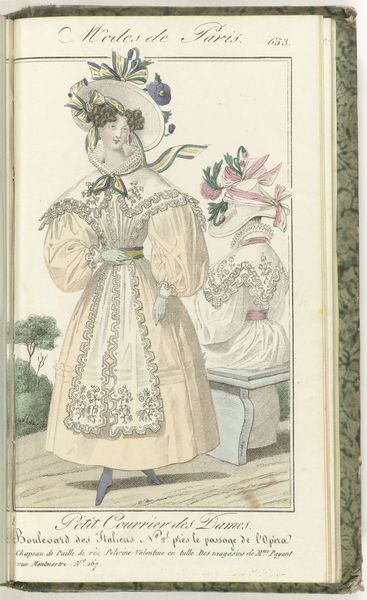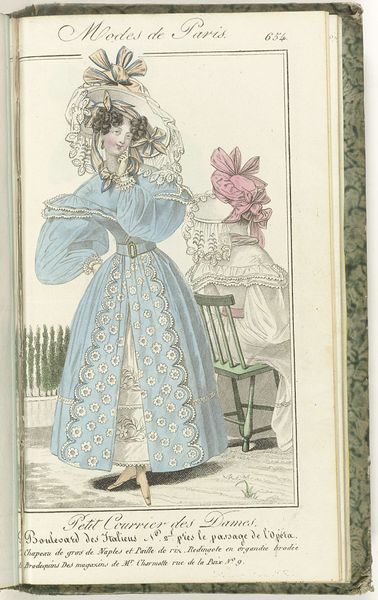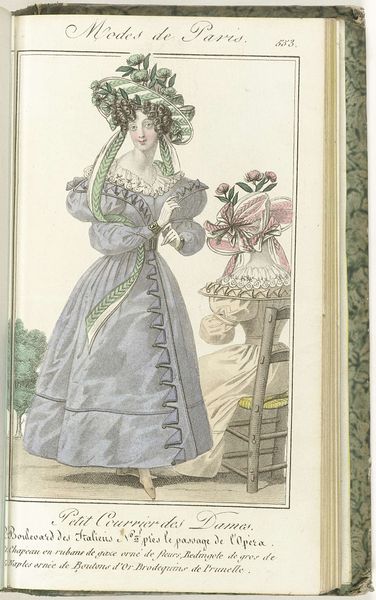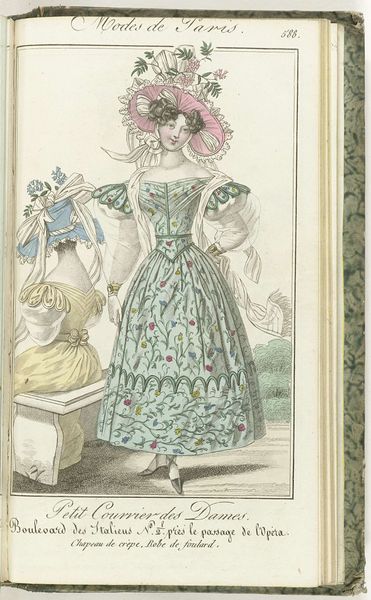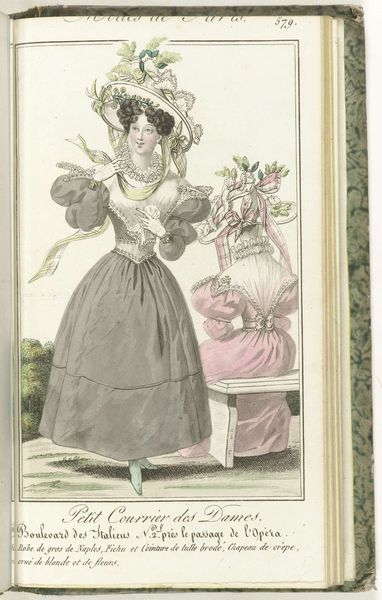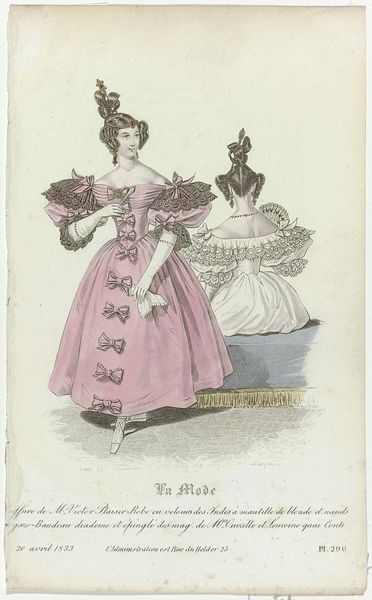
Petit Courrier des Dames, 31 mai 1828, No. 558 : Robe de guinguan brodée... 1828
0:00
0:00
anonymous
Rijksmuseum
print, engraving
#
portrait
# print
#
romanticism
#
genre-painting
#
dress
#
engraving
Dimensions: height 201 mm, width 113 mm
Copyright: Rijks Museum: Open Domain
Curator: This engraving, "Petit Courrier des Dames, 31 mai 1828, No. 558", showcases a fashion plate from 1828. It's fascinating to consider how prints like this acted as early forms of advertising, shaping consumer desires and dictating social status through dress. What strikes you most about this image? Editor: I find the excessive ornamentation almost comical. The ruffles, bows, and puffy sleeves seem so impractical, yet they communicate a very specific ideal of femininity. It also makes me wonder about the labour involved. What does this print reveal about the materials and processes that went into creating these garments? Curator: Precisely. Consider the fabric, likely a lightweight cotton or linen given the reference to "guingan brodée" - embroidered gingham. Its accessibility, due to expanding colonial trade networks and industrial textile production, is crucial. However, the hand embroidery speaks to a different, slower pace of artisanal skill. How does the print itself – an engraving – play into the dissemination of these ideas? Editor: The engraving allows for mass production, meaning more people could see and potentially try to emulate these styles. But doesn't the detailed nature of the print also suggest a certain level of artistry and care in its creation? Curator: Indeed. It complicates our understanding of the "art versus craft" debate. The engraver, though reproducing a fashion ideal, uses skill and technique to elevate a commercial image. Are they an artist or artisan? The division becomes blurred when we consider their labor. What implications might the clothing trade have on gender roles in the early 19th century? Editor: It seems the fashion industry provided opportunities, even if limited, for women both as producers and consumers, reinforcing and challenging established gender norms at the same time. Curator: Exactly. By looking at the materials, production processes, and social circulation of this fashion plate, we gain a richer understanding of the complexities of gender, class, and consumption in 19th-century society. Editor: It's amazing how much information can be gleaned from a single fashion plate. It's far more than just pretty dresses!
Comments
No comments
Be the first to comment and join the conversation on the ultimate creative platform.
